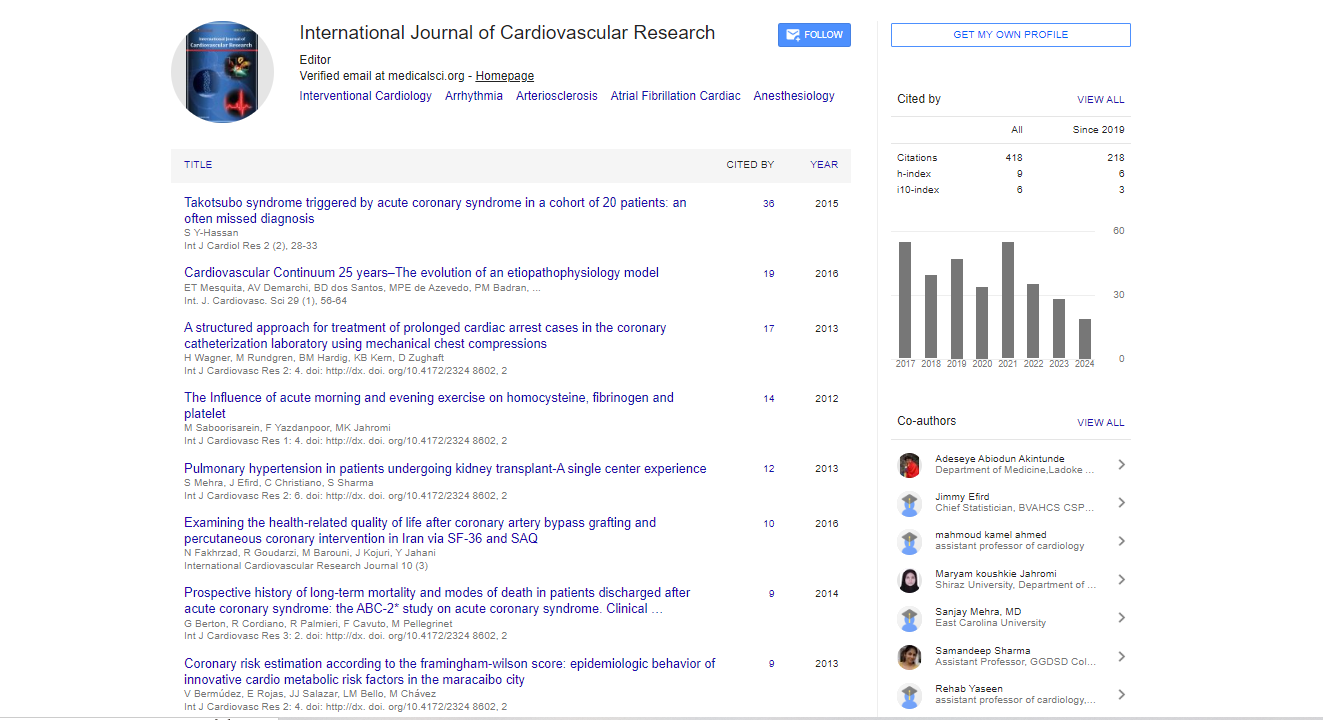Research Article, Int J Cardiovas Res Vol: 5 Issue: 6
Global Longitudinal Strain in Patients with Unexplained Dyspnea and Normal Diastolic Function at Rest
| Mona A. ELSaidy, Mohamed Abdelaal* and Ayman ELSheikh | |
| Cardiology Department, Tanta University Hospital, Egypt | |
| Corresponding author : Mohamed Abdelaal
Cardiology Department, Tanta University Hospital, Egypt E-mail: abd_alaal@yahoo.com |
|
| Received: September 06, 2016 Accepted: October 13, 2016 Published: October 17, 2016 | |
| Citation: ELSaidy MA, Abdelaal M, ELSheikh A (2016) Global Longitudinal Strain in Patients with Unexplained Dyspnea and Normal Diastolic Function at Rest. Int J Cardiovasc Res 5:7. doi:10.4172/2324-8602.1000289 |
Abstract
Dyspnea is a subjective feeling of difficulty of breath and could be due to many causes. If no cause is found on clinical examination the term unexplained dyspnea is applied. Aim of the work: to evaluate patients with unexplained dyspnea with global longitudinal strain at rest and with dobutamine stress echocardiography. Methods: 43 patients with dyspnea were included in the study. They were divided into 2 groups: group one included 30 patients and group two included 13 patients. All patients have normal baseline echocardiography and negative dobutamine stress echocardiography for ischemic heart disease. Patients were then checked with global longitudinal strain (GLS) at rest and after DSE. Results: patients in group two showed reduced GLS after DSE (12 ± 1%) than in group one (19 ± 1%) p>0.05. They have also high triglyceride level, higher body mass index and lower levels of HDL as compared to patients in group one. Conclusion: GLS seems to be a good parameter to study patients with unexplained dyspnea who will develop symptoms and high filling pressure on stress.
 Spanish
Spanish  Chinese
Chinese  Russian
Russian  German
German  French
French  Japanese
Japanese  Portuguese
Portuguese  Hindi
Hindi 



